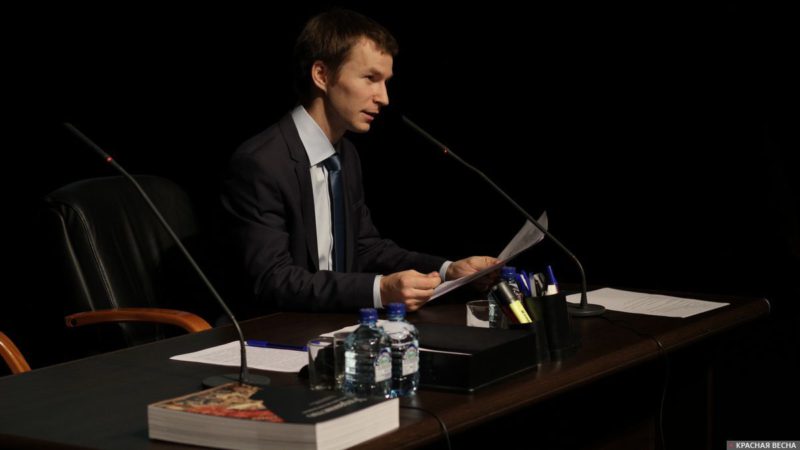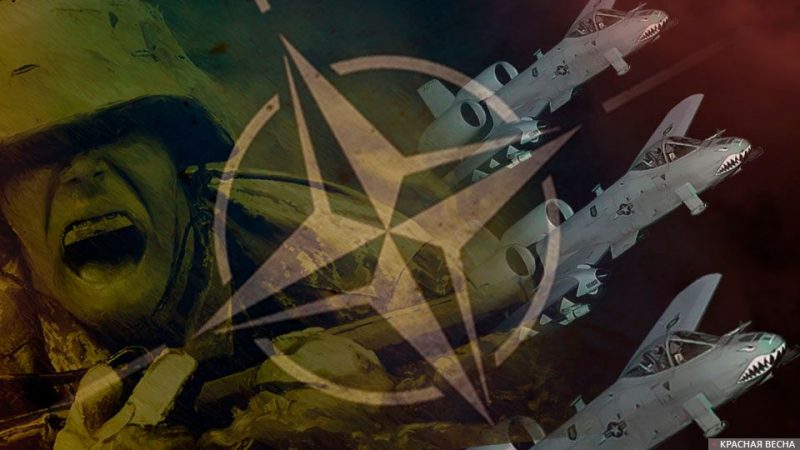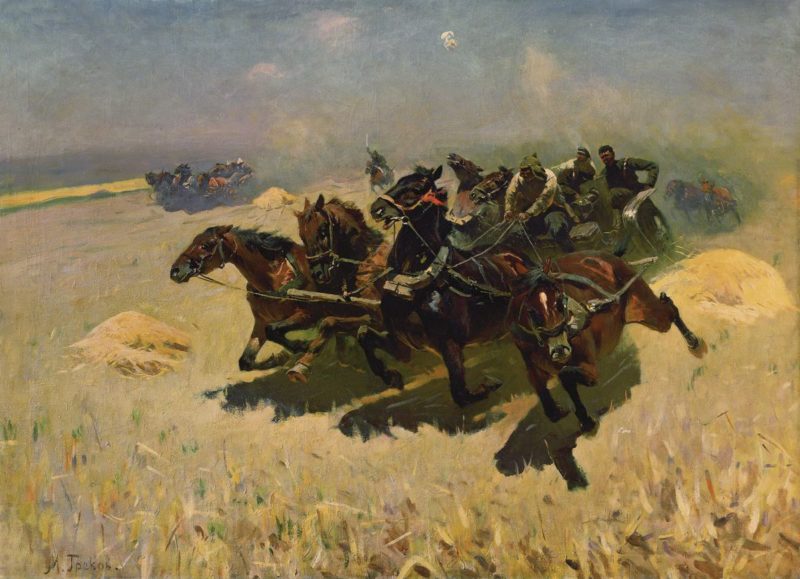17.10.2017, Russia.
A report on Vasyl Vyshyvaniy, a colorful representative of the House of Habsburg and the Ukrainian Monarchy Project was presented at the conference “Ukrainism: Who constructed it and why”, Rossa Primavera News Agency reported on October 11th.
Dmitry Stepanov, one of the authors of the monograph, started his speech with describing the three main dimensions of the Ukrainian monarchism; then he focused on the Habsburgs, who lost their throne after the collapse of the Austro-Hungarian monarchy, and the setting their eyes on Ukraine.
The co-author of the monograph stressed that the idea of the Habsburg dynasty taking the throne in Ukraine is not something unprecedented, and the Habsburgs have already tried to create a monarchy in Ukraine and to enthrone a Habsburg there in 1918, during the Civil War.
Notably, a short time before, during World War I, the father of Wilhelm von Habsburg, Archduke Charles Stephen of Austria, had already tried to become the monarch of the puppet Kingdom of Poland.
After describing the puppet Kingdom of Poland, which was created by the Germans and Austrians during the World War I, in detail, the speaker specifically focused on the similar but already refined model for a semi-colonial kingdom in Ukraine. Wilhelm von Habsburg, also known as Vasyl Vyshyvaniy, the son of Archduke Charles Stephen von Habsburg, was proposed as the monarch.
“Wilhelm von Habsburg consistently implemented the Ukrainian Monarchy Project,” started the speaker, after that he outlined the Habsburgs’ ties with nationalists.
During the 1930s, Wilhelm contacted the leaders of the “Organization of Ukrainian Nationalists” (banned in Russia), Evgeny Konovalets and Andrei Melnik, who fought together with Wilhelm in 1918, and he used his connections to secure diplomatic support for Ukraine. Wilhelm even went to London under their instructions.
In June 1934, Hitler informed Mussolini that Wilhelm was a liaison between the Ukrainian nationalists and the Austrian militias.
In 1942, Wilhelm met Roman Novosad, who was born in Galicia [a historical and geographic region in Central-Eastern Europe – Editor’s note], who studied at the Vienna Conservatory. Novosad was a liaison for the Ukrainian Insurgent Army (UIA), while Vyshivaniy had switched to working for French and English intelligence by then. He coordinated Allied air strikes, and he established connections between the allies and the UIA.
The speaker also talked about Wilhelm’s continued cooperation with the Western intelligence agencies after the war.
Wilhelm participated in the creation of an Eastern European intelligence network, which involved Ukrainian nationalists and collaborators. Collaborator Vasily Kachorovsky worked for French intelligence. SMERSH staff apprehended him in 1947, and he gave Roman Novosad and Wilhelm Habsburg up. Then they took Novosad, and he uncovered Wilhelm’s location. In 1948, Wilhelm was sentenced to 25-years’ imprisonment.
Vasyl Vyshivaniy died, but “the death of this particular representative of the Habsburg dynasty did not stop the House of Habsburgs’ from flirting with Ukraine.”
The scientific-practical conference “Ukrainism: Who constructed it and why” took place in Moscow on October 11 and 12, organized by Essence of Time social movement and Experimental Creative Centre International Public Foundation.
The emphasis of the researchers, who presented a monograph by the same name via the conference, is not on real history of Ukraine, which is firmly connected with Russian history, but the fundamentally anti-Russian construct of “Ukrainism”, which had been created over many centuries, and which the present Ukrainian regime is actively implementing.
Throughout the conference, the “Ukrainism” construct’s key formative moments were analyzed in detail; the common logic of its evolution was delineated; its modern forms and its most dangerous prospects of development were discussed.
Source: Rossa Primavera News Agency




